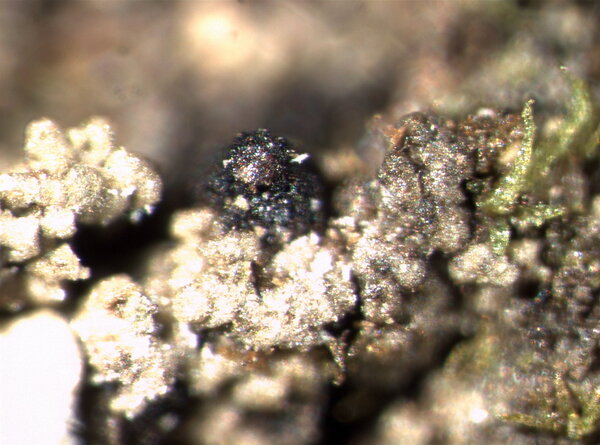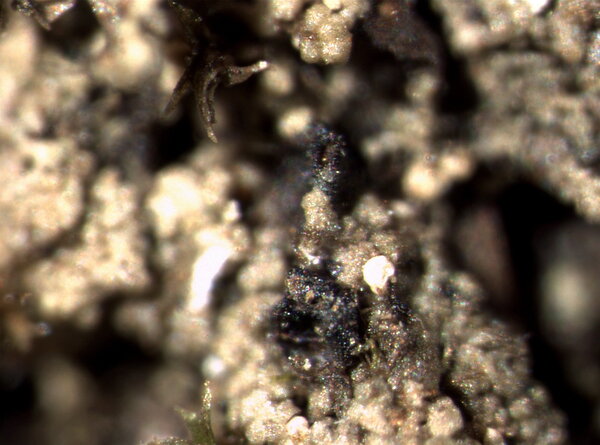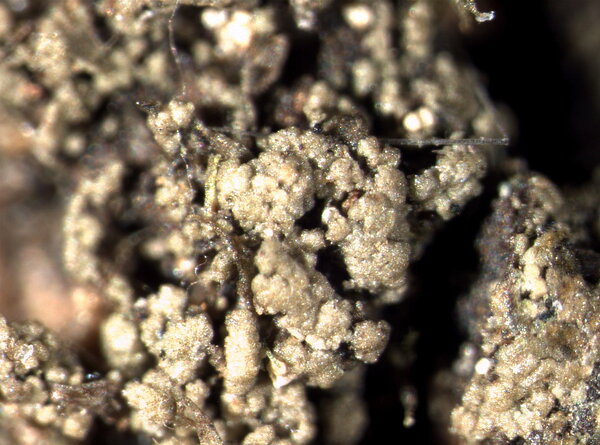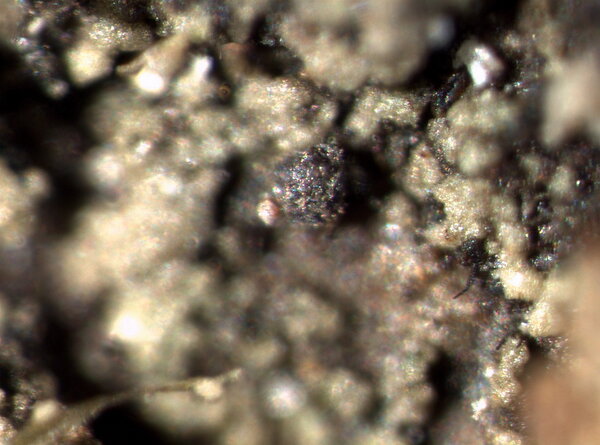Agonimia repleta Czarnota & Coppins
Graphis Scripta, 11, 2: 56, 2000
Synonyms:
Distribution: C - Sar (Ravera & al. 2022b).
Description: Thallus crustose, episubstratic, dull green, rarely with a brownish tinge, granular or minutely squamulose, with (0.03-)0.04-0.12 mm wide goniocysts often coalescing into a verrucose crust, the squamules, when present, flattened to convex, often minutely lobulate, up to 0.24 x 0.1 mm, adpressed to ascending (especially when developing on mosses). Cortex of the goniocysts of rounded to angular cells, a few of them with up to 1.7 µm high papillae. Perithecia black, including the ostiolar region, half to three-quarters immersed amongst the thalline granules, globose when young, later pear-shaped, 0.14-0.2 mm across, the upper part roughened with vertical furrows. Exciple 2-layered, pigmented in outer part, colourless and of compressed cells within; involucrellum absent; hamathecium of periphysoids which soon dissolve into a poorly differentiated hymenial gel (interascal filaments in mature ascomata lacking). Asci 8-spored, clavate, thin-walled, fissitunicate with a very thin exoascus, surrounded by a hemiamyloid gel. Ascospores muriform, hyaline, ellipsoid to rarely subglobose, 20-46 x 12-20 µm. Photobiont chlorococcoid, the cells 5-10 µm wide. Spot tests: K-, C-, KC-, P-, UV-. Chemistry: without lichen substances.Note: mainly on bark among mosses and on mossy rocks in rather humid and shaded situations. The species is apparently widespread in Central Europe; the Italian sample, from the bark of Q. coccifera, extends its distribution to the Mediterranean region. It probably does not belong to Agonimia in the strict sense; for further details see Czarnota & Coppins (2000).
Growth form: Crustose
Substrata: bark
Photobiont: green algae other than Trentepohlia
Reproductive strategy: mainly sexual
Commonnes-rarity: (info)
Alpine belt: absent
Subalpine belt: absent
Oromediterranean belt: absent
Montane belt: extremely rare
Submediterranean belt: absent
Padanian area: absent
Humid submediterranean belt: extremely rare
Humid mediterranean belt: extremely rare
Dry mediterranean belt: absent
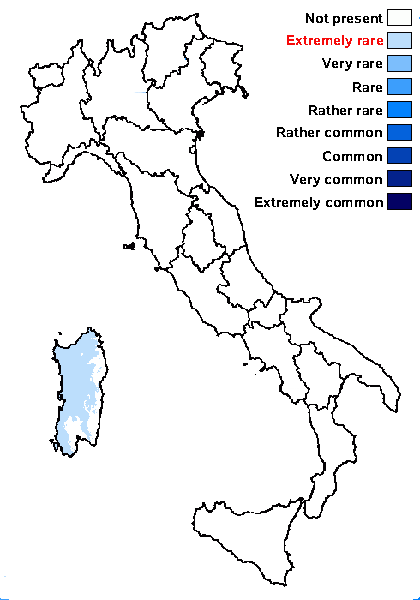
Predictive model
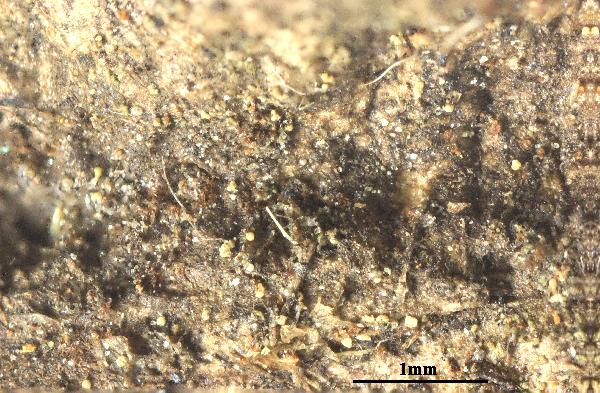

Felix Schumm - CC BY-SA 4.0
[VZR446], Bohemia sept. orientalis, Nové Mesto nad Metují, ad
septentriones a pago Peklo, prope molam "Suchánk v mlýn", in ripa
fluminis "MMetuje", 320 m. Ad corticem Tiliae cordatae vetustae. Leg.
& det. J. Halda, conf. P. Czarnota, 3.11.2000. - Thallus squamulosus,
viridis, corticem vel muscos incolens, Perithecia rarissima. EX A.
VEZDA: LICHENES RARIORES EXSICCATI NR. 446.
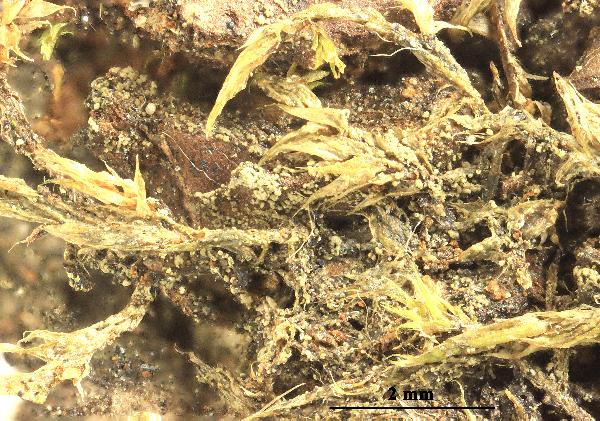

Felix Schumm - CC BY-SA 4.0
[VZR446], Bohemia sept. orientalis, Nové Mesto nad Metují, ad
septentriones a pago Peklo, prope molam "Suchánk v mlýn", in ripa
fluminis "MMetuje", 320 m. Ad corticem Tiliae cordatae vetustae. Leg.
& det. J. Halda, conf. P. Czarnota, 3.11.2000. - Thallus squamulosus,
viridis, corticem vel muscos incolens, Perithecia rarissima. EX A.
VEZDA: LICHENES RARIORES EXSICCATI NR. 446.
Growth form: Crustose
Substrata: bark
Photobiont: green algae other than Trentepohlia
Reproductive strategy: mainly sexual
Commonnes-rarity: (info)
Alpine belt: absent
Subalpine belt: absent
Oromediterranean belt: absent
Montane belt: extremely rare
Submediterranean belt: absent
Padanian area: absent
Humid submediterranean belt: extremely rare
Humid mediterranean belt: extremely rare
Dry mediterranean belt: absent

Predictive model


Felix Schumm - CC BY-SA 4.0
[VZR446], Bohemia sept. orientalis, Nové Mesto nad Metují, ad septentriones a pago Peklo, prope molam "Suchánk v mlýn", in ripa fluminis "MMetuje", 320 m. Ad corticem Tiliae cordatae vetustae. Leg. & det. J. Halda, conf. P. Czarnota, 3.11.2000. - Thallus squamulosus, viridis, corticem vel muscos incolens, Perithecia rarissima. EX A. VEZDA: LICHENES RARIORES EXSICCATI NR. 446.


 INDEX FUNGORUM
INDEX FUNGORUM
 GBIF
GBIF
